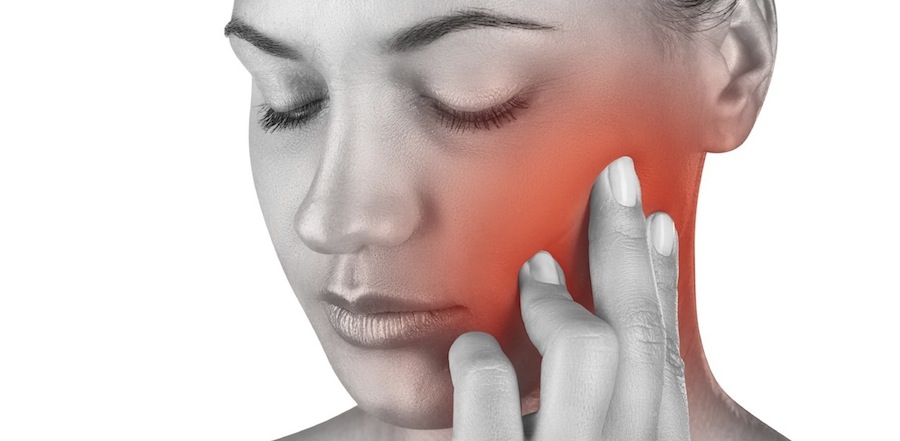TMJ (Jaw Pain) Treatments at Eastside Medical Group in Cleveland

Temporomandibular Joint disorder or TMJ is the term used in case of the mechanical dysfunction of one or both of the joints of the jaw.
TMJ is situated right in front of the ears. Because of this close connection, a patient with the problem of TMJ might also have a problem with the ears like a grind or crack and hearing the joint pop when the mouth opens or closes.
In the right condition, these joints help by acting as a shock absorber for the jaw. This cushioning effect is decreased when a misalignment or breakdown of cartilage in any of the joints take place. Continuous stress from chewing can cause pain and soreness in the joints and the muscles surrounding the joints.
A headache, dizziness, jaw pain and earache are the results of disturbances to normal functioning. The causes can be an uneven bite, trauma to the jaw, keeping the mouth open for a long period of time, bruxism or grinding the teeth and imbalance in the bite from dental restoration.
In order to check if popping and clicking noises, soreness and pain in the ear are due to TMJ, you should consult your chiropractor. To see if there has been damage or deterioration to the cartilage in the joint, x-rays are a good method to go for. To determine the overall integrity of the TMJ, MRI may also be done.
These tests and analyzing helps the chiropractor to plan the treatment method in a better way and to also determine the root cause of the pain and problem.
How Can Eastside Medical Group Help the Temporomandibular joint (TMJ)?
Trigger Point Therapy – Integrated care for the temporomandibular joint (TMJ) can ease the pain by correcting the misalignment between the spine and nervous system. It can be effective at reducing the pain associated with TMJ, either when used alone or as a complement to other treatments.
These are because, rather than change the diet or modify the teeth, it relaxes the muscles, adjusts the joint and uses specific trigger points to accurately reposition the jaw. When done successfully, this will not only relieve pain in the short run but it will help prevent TMJ pain from returning.
Comprehensive care that can involve a combination of massage, stretches, medicine, and chiropractic care of the temporomandibular joint (TMJ) focuses on relieving tension in the muscles around the joints themselves—working both outside and inside the mouth.
A trigger point is a very sensitive area made of muscle fibers. Trigger points feel like knots and may cause pain or even a twitching response when pressure is applied to them. A chiropractor can manipulate trigger points in such a way to alleviate the pain associated with them.
Why use Eastside Medical for Temporomandibular Joint Disorder?
Activator Method – While there are numerous ways to effectively treat temporomandibular joint (TMJ) disorder, scientific studies have shown that chiropractic was helpful in cases of TMJ. In a 2003 study, 15 participants were administered treatments with the Activator Method, which uses a tool that delivers high-frequency, low-impact adjustments.
All participants showed improvements in the distance they could open their jaws and in pain measurements. Although this group was not compared to a group receiving traditional treatment, it shows that chiropractic treatments like the Activator Method show promise as an emerging treatment for temporomandibular joint disorder (TMD).
Our medical group may be used alone or in conjunction with other treatment approaches such as:
- Application of hot and cold compresses also reduces inflammation.
- When teeth grinding or clenching is an issue, wearing a mouth night guard can help prevent these actions during sleep.
- Bite plates can help correct misalignment.
- Stress reduction, relaxation techniques, jaw-stretching exercises, and modifying chewing habits are all behavioral approaches that are proven effective.
More research into chiropractic methods used to treat temporomandibular joint (TMJ) disorder are needed; meanwhile, evidence from existing studies as well as patient testimony suggest that chiropractic therapies are helpful in relieving TMJ symptoms.
Many report relief and satisfaction with chiropractic care for temporomandibular joint (TMJ) disorder. In a survey of 192 members of a health maintenance organization published in 2003, nearly two-thirds reported using some form of complementary medicine to treat TMJ.
Almost everyone surveyed used complementary approaches together with other traditional treatments, and the greatest satisfaction was reported for the hands-on integrated therapies, including massage and chiropractic.



